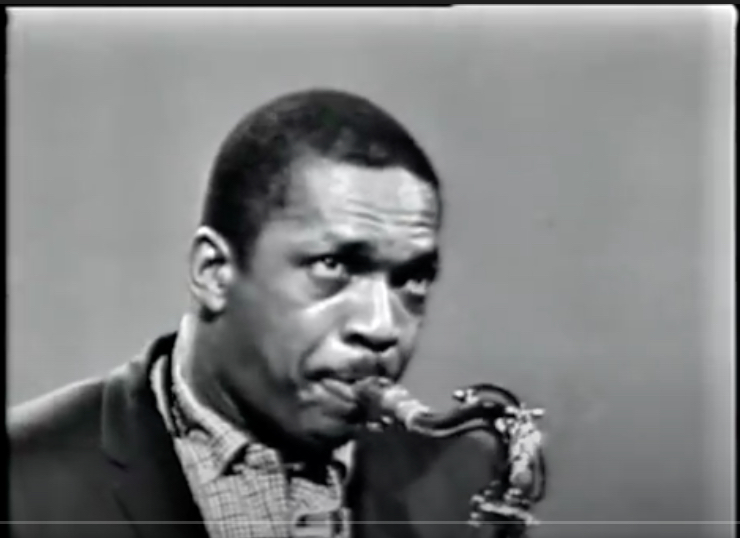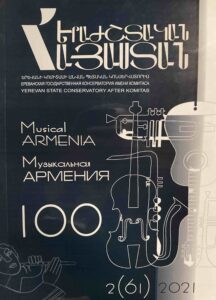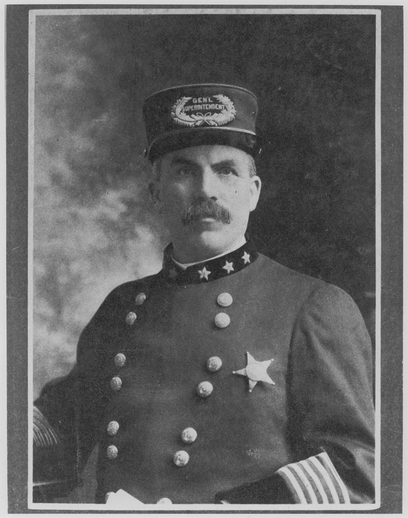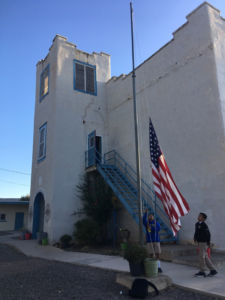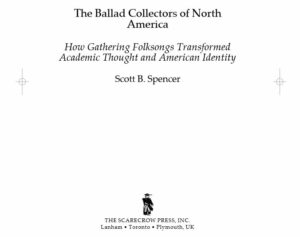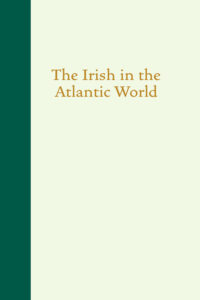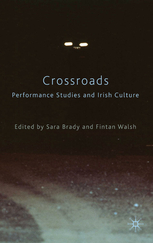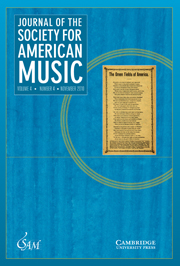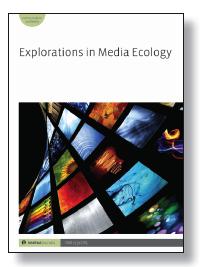Meme and Variations: How Video Mashups of John Coltrane's 'Giant Steps' Became a Thing
Chapter in the forthcoming book Remediating Sound: Repeatable Culture, YouTube and Music, edited by Holly Rogers, Joana Freitas and João Francisco Porfírio for Bloomsbury's series, "New Approaches to Sound, Music, and Media." This study looks to emerging video memes referencing John Coltrane’s jazz classic, Giant Steps. Memes are rapidly-evolving, short video pieces with deep meanings and multiple referential layers, often intended to be consumed and passed in our feverish and fleeting lacuna of short attention spans and shifting platforms. YouTube has become one of the most important testing grounds and repositories of longer-form musical memes. The field of Ethnomusicology has not been well-equipped to study this new realm, as it has been built on classic ideas of personal observation, co-spatial and co-temporal engagement, and ethnographic method. The intent of this study is to expand our field’s toolset to better deal with these digital texts; to tease out the cultural context around YouTube memes; to grasp and document the intentions behind the creation of pieces within a genre of memes; and to understand this particular trope’s placement in larger meme culture. An accompanying video playlist is here.
Komitas, Folksong Collection, and National Identity in Times of Great Change
Yerevan State Conservatory, Armenia. An invited talk for a conference in celebration of the 100th anniversary of the Yerevan State Conservatory. The paper compares three (almost) contemporary folksong collectors in Armenia, England, and America, and discusses ballad collection and the impact it had on nationalism and national identity.
Capturing O'Neill - a digital humanities site
With the Irish Traditional Music Archive in Dublin and the Ward Irish Music Archives in Milwaukee, this initiative built an online resource of signed dedication pages of books by Capt. Francis O'Neill, gifted to others by the author. Each entry has a biography of the recipient, and (when possible) a story of provenance for each book - all to contextualize O'Neill's participation in Irish American society in the early 1900s. This project has been researched and assembled in part by the students in Scott Spencer's (University of Southern California) "Irish Music" graduate course, and peer-curated and reviewed by by Drs. Aileen Dillane (University of Limerick), Michael O'Malley (George Mason University), Daniel T. Neely (Irish Echo), and Scott Spencer (USC) with support from the Ward Irish Music Archives, and the Irish Traditional Music Archive.
Exploring a Means of Musical Exchange in New Mexico – A Pilot Workshop
In October of 2019 a group from the Sibelius Academy in Helsinki, Finland arrived in New Mexico for a pilot musical workshop and cultural exchange with the teachers and students of the St. Joseph Mission School in San Fidel, New Mexico. The exchange was intended to result in a collaborative and engaged performance between indigenous musical traditions of northern Scandinavia and the Sámi people, and the local traditions of the St. Joseph School teachers and students, who largely live on the Acoma and Laguna Pueblos.
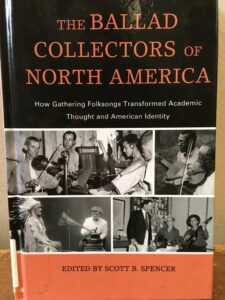
The Ballad Collectors of North America
Much has been written about the songs gathered in North America in the first half of the 20th century. However, there is scant information on those individuals responsible for gathering these songs. This work fills that gap, documenting the efforts of those who transcribed and recorded North American folk songs.
Both biographical and topical, this book chronicles not only the most influential of these “song catchers” but also examines the main schools of thought on the collection process, the leading proponents of those schools, and the projects that they shaped. Contributors also consider the role of technology—especially the phonograph—in the collection efforts.
Chapters organized by region cover such areas as Appalachia, the West, and Canada, while others devoted to specialized topics from the cowboy tune and occupational song to the commercialization of folk music through song collections and anthologies. Ballad Collectors investigates the larger role of the ballad in the development of American identity, from the national appreciation of cowboy songs in popular culture to the use of Appalachian song forms in radio broadcasts to the role of dustbowl ballads in the urban folk revival of the 1950s and 1960s. Finally, this collection assesses the changing role of songs and song texts in the academic fields of folklore, anthropology, musicology, and ethnomusicology. Reviews
The Ballad Collectors of North America. Lanham: Scarecrow Press, 2011: 1-19.
Ballad Collecting: Impetus and Impact
An introduction to the Ballad Collectors of North America, this chapter introduces the methodology behind the book, details the ways in which various academic fields were formed by the Ballad Wars, and discusses its progenitor, Francis James Child (of the Child ballads).
“Ballad Collecting: Impetus and Impact.” The Ballad Collectors of North America. Lanham: Scarecrow Press, 2011: 1-19.
Transatlantic Migrations of Irish Music in the Early Recording Age
In the early 20th century, recordings of Irish musicians in America had major impact on traditional musicians in both Irish America and Ireland. This idea has often been repeated in Irish music circles, and academic discourse surrounding the movement of these recordings generally includes a version of the same generic sentence: "these early 78 rpm records made their way to Ireland and had a profound effect upon the tradition." Publications on the subject employ a wide variety of verbs to describe the means by which these recordings moved through what is often described as a somewhat murky Atlantic trade route. The following research paper should help to illuminate this elusive and undocumented migratory pattern through a study of the economic, technologic and cultural facets of commercial and sub-commercial recordings of traditional Irish music in the early twentieth century. The result will be a window into the ways in which traditional Irish music became a cross-Atlantic phenomenon with the dawn of the recording age, demonstrating the means through which musicians both in the diaspora and in the geographic center of the tradition engaged with debates on ideas of traditionality and authenticity - a dialogue which continues today. Review
“Transatlantic Migrations of Irish Music in the Early Recording Age.” The Irish in the Atlantic World. David Gleeson, editor. University of South Carolina Press, 2010: 53-75.
Traditional Irish Music in the 21st Century: Networks, Technology and the Negotiation of Tradition
Ideas of traditionality, historic continuity, authenticity, and quality of performance in Irish traditional music are not inherent to the music as performed. Rather, they are dependent on situation and community, and are constantly negotiated and performed by those who play and discuss the music. This chapter explores the reasons why these concepts are engaged by both musicians and those viewing the tradition from the outside. As the music and its proponents have expanded to a global diaspora, these essential negotiations have become reliant on an intricate web of technological communications, strung together by a wide variety of interpersonal, affiliative, and institutional lines of communication and served by a number of core resources.
The various networks through which musicians determine traditionality within this art-form are representative of the ongoing process of change within this oral tradition, and the constant negotiating and reshaping of the corpus of collective memory within such a tradition. Simply put, practitioners within a musical tradition continuously determine what is traditional and authentic through their interactions.
“Traditional Irish Music in the 21st Century: Networks, Technology and the Negotiation of Tradition.” Performing at the Crossroads: Critical Essays on Performance Studies and Irish Culture. Sara Brady and Fintan Walsh, editors. Dublin: Palgrave, 2009: 58-70.
Wheels of the World: How Recordings of Irish Traditional Music Bridged the Gap Between Homeland and Diaspora
At the dawn of the Twentieth Century and the height of the Recording Age, Irish American musicians began to record Irish traditional music on both commercial and subcommercial recordings. Circulated within the diaspora during a changing sense of Irish identity and sent home to a nationalist revival, these recordings had a profound impact on both traditional performance practices and modes of transmission. Quickly accepted by many at the heart of the tradition, these recordings were used by practitioners to bridge vast geographic distances and solidify vital lines of communication, allowing the diaspora to engage actively with the larger tradition. Review
“Wheels of the World: How Recordings of Irish Traditional Music Bridged the Gap Between Homeland and Diaspora.” Journal of the Society for American Music 4:4 (2010): 437-449.
Soundscapes and Representation in the Mashantucket Pequot Museum and Research Center
The fields of musicology and ethnomusicology are newcomers to the analysis of nontextual soundscapes outside the realm of performance - the usual realm of media ecology. A possible intellectual bridge between these fields may reside in museum audio installations - in particular, that of the Mashantucket Pequot Museum and Research Center in Connecticut. The museum has an extensive network of cutting-edge museum audio technology, with special attention given to a 22,000-square-foot “immersion environment diorama.” Through a vast network of audio speakers, motion detectors, and decibel meters all overseen by a central computer, visitors negotiate a hypernatural soundscape of exquisite detail, interacting with sonic aspects of the recreated natural habitat. By examining the role of audio in the displays, and using tools from all three fields, one can analyze the cultural and political narratives involved in the museum and use the Pequot example to discuss larger issues of digital audio presentation technology and its use in the propagation of information, both conscious and unconscious.
“Soundscapes and Representation in the Mashantucket Pequot Museum and Research Center.” Explorations in Media Ecology. 6:4 (2007): 17-29.
Exploring a Means of Musical Exchange in New Mexico – A Pilot Workshop
In October of 2019 a group from the Sibelius Academy in Helsinki, Finland arrived in New Mexico for a pilot musical workshop and cultural exchange with the teachers and students of the St. Joseph Mission School in San Fidel, New Mexico. The exchange was intended to result in a collaborative and engaged performance between indigenous musical traditions of northern Scandinavia and the Sámi people, and the local traditions of the St. Joseph School teachers and students, who largely live on the Acoma and Laguna Pueblos.

The Ballad Collectors of North America
Much has been written about the songs gathered in North America in the first half of the 20th century. However, there is scant information on those individuals responsible for gathering these songs. This work fills that gap, documenting the efforts of those who transcribed and recorded North American folk songs.
Both biographical and topical, this book chronicles not only the most influential of these “song catchers” but also examines the main schools of thought on the collection process, the leading proponents of those schools, and the projects that they shaped. Contributors also consider the role of technology—especially the phonograph—in the collection efforts.
Chapters organized by region cover such areas as Appalachia, the West, and Canada, while others devoted to specialized topics from the cowboy tune and occupational song to the commercialization of folk music through song collections and anthologies. Ballad Collectors investigates the larger role of the ballad in the development of American identity, from the national appreciation of cowboy songs in popular culture to the use of Appalachian song forms in radio broadcasts to the role of dustbowl ballads in the urban folk revival of the 1950s and 1960s. Finally, this collection assesses the changing role of songs and song texts in the academic fields of folklore, anthropology, musicology, and ethnomusicology. Reviews
The Ballad Collectors of North America. Lanham: Scarecrow Press, 2011: 1-19.
Ballad Collecting: Impetus and Impact
An introduction to the Ballad Collectors of North America, this chapter introduces the methodology behind the book, details the ways in which various academic fields were formed by the Ballad Wars, and discusses its progenitor, Francis James Child (of the Child ballads).
“Ballad Collecting: Impetus and Impact.” The Ballad Collectors of North America. Lanham: Scarecrow Press, 2011: 1-19.
Transatlantic Migrations of Irish Music in the Early Recording Age
In the early 20th century, recordings of Irish musicians in America had major impact on traditional musicians in both Irish America and Ireland. This idea has often been repeated in Irish music circles, and academic discourse surrounding the movement of these recordings generally includes a version of the same generic sentence: "these early 78 rpm records made their way to Ireland and had a profound effect upon the tradition." Publications on the subject employ a wide variety of verbs to describe the means by which these recordings moved through what is often described as a somewhat murky Atlantic trade route. The following research paper should help to illuminate this elusive and undocumented migratory pattern through a study of the economic, technologic and cultural facets of commercial and sub-commercial recordings of traditional Irish music in the early twentieth century. The result will be a window into the ways in which traditional Irish music became a cross-Atlantic phenomenon with the dawn of the recording age, demonstrating the means through which musicians both in the diaspora and in the geographic center of the tradition engaged with debates on ideas of traditionality and authenticity - a dialogue which continues today. Review
“Transatlantic Migrations of Irish Music in the Early Recording Age.” The Irish in the Atlantic World. David Gleeson, editor. University of South Carolina Press, 2010: 53-75.
Traditional Irish Music in the 21st Century: Networks, Technology and the Negotiation of Tradition
Ideas of traditionality, historic continuity, authenticity, and quality of performance in Irish traditional music are not inherent to the music as performed. Rather, they are dependent on situation and community, and are constantly negotiated and performed by those who play and discuss the music. This chapter explores the reasons why these concepts are engaged by both musicians and those viewing the tradition from the outside. As the music and its proponents have expanded to a global diaspora, these essential negotiations have become reliant on an intricate web of technological communications, strung together by a wide variety of interpersonal, affiliative, and institutional lines of communication and served by a number of core resources.
The various networks through which musicians determine traditionality within this art-form are representative of the ongoing process of change within this oral tradition, and the constant negotiating and reshaping of the corpus of collective memory within such a tradition. Simply put, practitioners within a musical tradition continuously determine what is traditional and authentic through their interactions.
“Traditional Irish Music in the 21st Century: Networks, Technology and the Negotiation of Tradition.” Performing at the Crossroads: Critical Essays on Performance Studies and Irish Culture. Sara Brady and Fintan Walsh, editors. Dublin: Palgrave, 2009: 58-70.
Wheels of the World: How Recordings of Irish Traditional Music Bridged the Gap Between Homeland and Diaspora
At the dawn of the Twentieth Century and the height of the Recording Age, Irish American musicians began to record Irish traditional music on both commercial and subcommercial recordings. Circulated within the diaspora during a changing sense of Irish identity and sent home to a nationalist revival, these recordings had a profound impact on both traditional performance practices and modes of transmission. Quickly accepted by many at the heart of the tradition, these recordings were used by practitioners to bridge vast geographic distances and solidify vital lines of communication, allowing the diaspora to engage actively with the larger tradition. Review
“Wheels of the World: How Recordings of Irish Traditional Music Bridged the Gap Between Homeland and Diaspora.” Journal of the Society for American Music 4:4 (2010): 437-449.
Soundscapes and Representation in the Mashantucket Pequot Museum and Research Center
The fields of musicology and ethnomusicology are newcomers to the analysis of nontextual soundscapes outside the realm of performance - the usual realm of media ecology. A possible intellectual bridge between these fields may reside in museum audio installations - in particular, that of the Mashantucket Pequot Museum and Research Center in Connecticut. The museum has an extensive network of cutting-edge museum audio technology, with special attention given to a 22,000-square-foot “immersion environment diorama.” Through a vast network of audio speakers, motion detectors, and decibel meters all overseen by a central computer, visitors negotiate a hypernatural soundscape of exquisite detail, interacting with sonic aspects of the recreated natural habitat. By examining the role of audio in the displays, and using tools from all three fields, one can analyze the cultural and political narratives involved in the museum and use the Pequot example to discuss larger issues of digital audio presentation technology and its use in the propagation of information, both conscious and unconscious.
“Soundscapes and Representation in the Mashantucket Pequot Museum and Research Center.” Explorations in Media Ecology. 6:4 (2007): 17-29.
